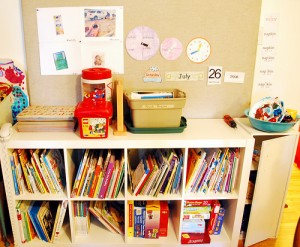
Staying Healthy During The Flu Season
 Recently, I have found myself becoming a “paranoid parent” with regard to my children’s health. All the constant flooding of the news about the Swine Flu or H1N1 Flu has really got me worried. It is especially worrisome to me because our son, who has Type 1 Diabetes, is at a greater risk of complications should he contract one of these viruses.
Recently, I have found myself becoming a “paranoid parent” with regard to my children’s health. All the constant flooding of the news about the Swine Flu or H1N1 Flu has really got me worried. It is especially worrisome to me because our son, who has Type 1 Diabetes, is at a greater risk of complications should he contract one of these viruses.
So, last night, I sat down and had a long talk with God. There are only so many things we as parents can do to protect our children, from the flu or anything for that matter, and I really needed to get my thoughts into perspective. After my prayer time, I felt much more at peace and decided that I would be proactive and do what I could, but also have to trust God for His protection.
Here are some things you can do to help protect your kids from the seasonal flu and H1N1:
Wash Your Hands – We all know the importance of washing our hands to prevent spreading illness. The Centers for Disease Control emphasize washing with soap and water, especially after you cough or sneeze. Alcohol based hand-sanitizers are also a great weapon in the flu fight!
Avoid Touching Your Eyes and Mouth – Your eyes and mouth are great germ transmitters, so avoid biting your fingernails or playing with your eyelashes!
Cough or Sneeze Into Tissue – Coughing or sneezing into a tissue and throwing it away is the best way to get rid of your germs. Make sure to wash your hands afterward. If a tissue is not readily available, it is suggested that you cough or sneeze into your sleeve and NOT your hand.
Avoid Sick People – This seems like an easy one, right? But reality is that we are exposed to sick people everyday at the grocery store, post office, or even at church. Encourage your friends NOT to bring their kids over even if they “just have a runny nose, but no fever”. Also, if one of your children gets sick, try to keep the others from playing with them until they have been fever free for at least 24 hours.
Sanitize Your Toys – I am guilty of not doing this as often as I should, but it’s great practice to take out the toys and sanitize them often, especially after a child is ill. This will help prevent the spreading of “old germs” and possibly new ones.
Get Vaccinated – Everyone in your family should get their annual flu shot. It’s the best way to prevent contracting the flu. If you are sensitive to the vaccine or agents in it, talk to your doctor or your child’s doctor about your options. If your pediatrician’s office isn’t offering the flu vaccine or has run out (like mine did!), CVS and Walgreens walk-in clinics provide flu shots to children 18 months and older. Contact your local one to see if they have the vaccine in stock before heading out.
Pray – Let’s face it, we can do all of the things listed above and someone is still bound to get sick, so the best way to keep your sanity during this crazy time is to pray and trust God for His protection and health. If nothing else, it’s a great way to to find peace!
For more information about the seasonal flu or the H1N1 virus, check out the CDC website or the government’s special flu website.
What have you done to safeguard your family during this flu season?
Photo Courtesy of itsv
Share the fun: Email + Del.icio.us + Digg + Technorati


 What ever happened to movies that are capable of portraying a valuable life lesson in a manner that is suitable for children? My husband and I recently took our two daughters (6 and 7) to watch Astroboy for what we thought would be a nice, entertaining evening – instead I spent almost the whole movie comforting my youngest and worrying about the nightmares they would have that night. I should have known things weren’t going to go well when within the first five minutes the little boy Toby (later referred to as Astroboy) is killed by a huge robot named the “Peacekeeper” (created by a government official to help him win his next term in office.)
What ever happened to movies that are capable of portraying a valuable life lesson in a manner that is suitable for children? My husband and I recently took our two daughters (6 and 7) to watch Astroboy for what we thought would be a nice, entertaining evening – instead I spent almost the whole movie comforting my youngest and worrying about the nightmares they would have that night. I should have known things weren’t going to go well when within the first five minutes the little boy Toby (later referred to as Astroboy) is killed by a huge robot named the “Peacekeeper” (created by a government official to help him win his next term in office.) Since our son was about 18 months old, he has experienced night terrors. At first we had no idea what was happening to him in the middle of the night until I had a conversation with my friend Karen about it and she told me of her son having the same thing… night terrors. For Andrew, it usually happens less than an hour after he goes to bed and then he will generally have multiple episodes of this in the same night. He wakes up crying and is completely inconsolable for up to about 35 minutes. There is nothing we can do to even remotely calm him down. He appears to be awake, but technically isn’t. It is quite a strange event.
Since our son was about 18 months old, he has experienced night terrors. At first we had no idea what was happening to him in the middle of the night until I had a conversation with my friend Karen about it and she told me of her son having the same thing… night terrors. For Andrew, it usually happens less than an hour after he goes to bed and then he will generally have multiple episodes of this in the same night. He wakes up crying and is completely inconsolable for up to about 35 minutes. There is nothing we can do to even remotely calm him down. He appears to be awake, but technically isn’t. It is quite a strange event. 






